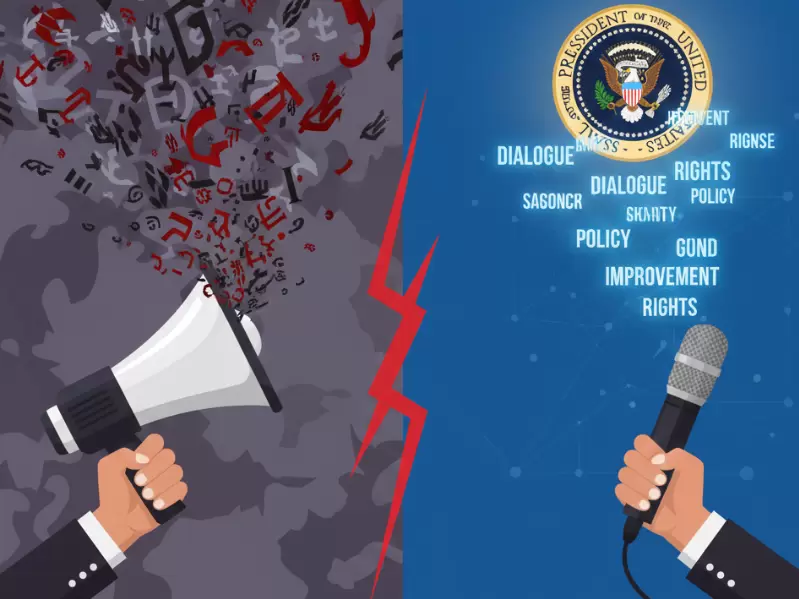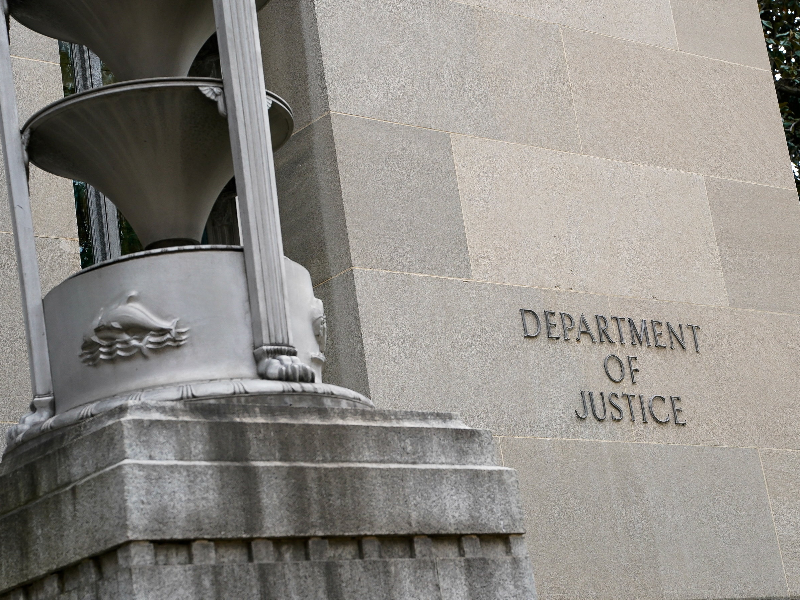The Red State Enigma: Prosperity’s Divides and the GOP’s Self-Inflicted Wounds
The states that vote red most reliably—those bastions of GOP orthodoxy from Mississippi to Montana—are not just politically entrenched; they are economically adrift, educationally starved, and socially frayed.
.jpg) Donald Trump. / Facebook/Donald Trump
Donald Trump. / Facebook/Donald Trump
In the summer of 2025, as the echoes of another fractious election faded, Donald Trump unleashed a barb that cut deeper than most.
Addressing a rally in Ohio, he lashed out at his own base—those die-hard supporters clamoring for the release of Jeffrey Epstein’s files—calling them “stupid” and “foolish” for falling into what he deemed a Democratic “hoax.” “Some stupid Republicans and foolish Republicans fall into the net,” he fumed, as reported by ABC News and The Hill.
It was a rare moment of candor from the man who once branded his followers his “favorite people,” revealing a truth long obscured by partisan fog: even the architect of modern Republicanism views his heartland acolytes with a mix of pity and contempt.
Trump’s slip laid bare a stark American paradox. The states that vote red most reliably—those bastions of GOP orthodoxy from Mississippi to Montana—are not just politically entrenched; they are economically adrift, educationally starved, and socially frayed.
Their residents earn less, learn less, and live shorter, more violent lives than their blue-state counterparts.
This isn’t mere coincidence; it’s the harvest of decades of policy choices that prioritize cultural grievances over structural investment. And as these states cling to their guns and grudges, they don’t just falter—they tether the nation’s progress, siphoning federal resources while resisting the innovations that could lift all boats.
Yet, in a twist of irony, the very tech titans who embody the future—Elon Musk and Peter Thiel—pour fortunes into the party that would dismantle it.
To forge a more perfect union, America must confront this divide head-on: not with scorn, but with targeted education, economic reinvestment, and a renewed commitment to shared prosperity.
Consider the ledger of economic vitality. A 2024 analysis by the Bureau of Economic Analysis, weighted by population, paints a damning portrait: Democratic-leaning states boast a per capita GDP of $98,830, dwarfing the $75,418 in Republican strongholds.
Of the 20 wealthiest states by GDP per capita—New York at $92,341, Massachusetts close behind—19 are solidly blue, per Statista data. The poorest 20? Nineteen red. This isn’t abstract; it’s lived reality.
In blue California and New York, median household incomes hover above $80,000, fueling tech hubs and cultural exports that propel global markets. In red West Virginia or Alabama, they’re stuck below $55,000, trapped in extractive industries like coal, which employ fewer than 40,000 nationwide yet consume billions in subsidies.
Why the gap? Republican governance, with its aversion to public investment, bears much blame. Red states slash taxes for the wealthy—think Kansas’s 2012 experiment, which cratered schools and roads—while relying on federal aid to plug the holes.
MoneyGeek’s 2024 report shows high-GDP blue states like Connecticut fund themselves, while low-GDP red ones like Kentucky draw 40% of budgets from Washington. Nationally, this drags: Brookings Institution analysis of the 2024 election reveals Trump won counties comprising just 28% of U.S. GDP, down from 29% in 2016, underscoring how red enclaves extract more than they contribute.
The GOP touts job growth in states like Florida, but even there, per capita output lags, per GOP’s own 2024 research—masking a reliance on low-wage tourism over high-value innovation.
Education amplifies this malaise, turning economic headwinds into generational gales. WalletHub’s 2025 rankings crown Massachusetts the most educated state, with 47% of adults holding bachelor’s degrees; it’s blue, like the top nine behind it.
Red states dominate the bottom: West Virginia (21% college grads), Arkansas (24%), per U.S. Census data. Poverty follows suit—the 2024 Census pegs the national rate at 10.6%, but in red Mississippi, it’s 19.6%; blue New Hampshire’s is 6.8%. Residents in red states earn 15-20% less than blue peers with equivalent education and jobs, per Quora-cited labor analyses, a penalty rooted in underfunded schools and anti-union laws that suppress wages.
Thom Hartmann’s 2024 Hartmann Report crystallizes the triad: red states are poorer, less educated, and sicker, with life expectancies trailing blue ones by three years. A Reddit thread dissecting 2025 rankings echoes this: of the bottom 10 in education, eight are red, their curricula warped by book bans and “critical race theory” panics that prioritize ideology over literacy.
Yahoo’s 2025 comparison notes blue states allocate education funds robustly—New Jersey spends $25,000 per pupil—while red ones lean on federal scraps, yielding 16-point NAEP score gaps in math and reading. The result? A brain drain: ambitious youth flee to blue hubs, leaving red heartlands hollowed out.
This fragility spills into violence, where guns become both symbol and scourge. Republicans own firearms at twice the rate of Democrats—44% vs. 20%, per 2023 Pew and 2025 Statista surveys—concentrated in red states where ownership exceeds 50%.
Gun death rates? Red states lead: a 2023 congressional report shows Southern red enclaves with homicide rates 50% above blue Northeast ones, suicides comprising 54% of fatalities. Politico’s 2023 geography of gun violence maps this: rural red counties clock 15 deaths per 100,000, vs. 8 in urban blue. Weak laws correlate: Giffords’ 2025 scorecard grades red states F for safety, linking lax permitting to spikes in mass shootings and urban spillover.
Everytown’s rankings place Colorado (purple, top-10 strong laws) safer than red Wyoming. In a nation weary of Parklands and Uvaldes, this isn’t freedom—it’s folly, exporting chaos to blue metropolises via interstate trafficking.
The national toll is profound. Red-state laggards hamstring America’s ascent. The Joint Economic Committee’s 2024 review affirms: economies thrive under Democrats, with 4.1% average GDP growth vs. Republicans’ 2.5% since 1945. Innovation suffers most: Foreign Affairs warns Trump’s 2025 cuts to R&D—slashing NSF budgets 20%—eviscerate the “wellspring of prosperity,” per American Progress.
Blue states host 80% of top universities and patents; red ones, mired in anti-science rhetoric, export talent while importing welfare—$1.2 trillion net from blue to red since 1980, per fiscal flows studies.
Brookings tracks Trump’s deregulatory zeal as a boon for polluters, not innovators, stunting clean energy transitions where blue California leads with 30% renewables vs. red Texas’s fossil cling.
The upshot? A polarized polity where red intransigence on immigration and education throttles the diverse, skilled workforce essential for AI and biotech dominance—fields where Belfer Center warns industrial policy falters without bipartisan buy-in.
Enter the billionaires’ blind spot: Peter Thiel and Elon Musk, avatars of progress who bankroll regression. Thiel, the gay PayPal co-founder who once decried “woke” culture, funneled millions to JD Vance and Trump in 2024, per NYT reporting, despite GOP assaults on LGBTQ rights. Musk, the immigrant scion whose empire thrives on H-1B visas he vociferously defends, donated $277 million to Republicans—yet rails against the party’s nativism.
Fortune details Thiel’s network infiltrating Trump’s orbit, installing Sacks at State to gut regulations that Musk’s Tesla navigates via subsidies. Why? Wired posits it’s “founder as god”: a libertarian disdain for bureaucracy, amplified by Trump’s promise of deregulation, even if it means allying with cultural conservatives who loathe their values.
Thiel told Yahoo Musk’s Trump pivot “made it safe” for Valley elites, a herd mentality masking the mismatch: Musk’s Mars dreams clash with GOP climate denial; Thiel’s contrarianism ignores how red policies stifle the very disruption he preaches. Le Monde frames it as fortunes chasing tax cuts, but LA Times sees deeper: a bid to reshape government in their image, consequences be damned.
Their support isn’t ideology—it’s insulation, a gilded escape from the heartland woes they exacerbate.
What, then, must America do? Scolding won’t suffice; transformation demands strategy. First, federal incentives: tie aid to education benchmarks, channeling $100 billion annually—via Biden-era infrastructure extensions—into red-state schools for universal pre-K and trade apprenticeships. Model it on blue successes: Massachusetts’s community college tuition waivers boosted grads 25%.
Second, innovation corridors: bipartisan bills like the 2024 Bipartisan Policy Center’s “Innovation Nation” could seed tech parks in Appalachia, blending red labor with blue capital, creating 2 million jobs per McKinsey projections.
Third, civic renewal: media literacy programs, funded at $5 billion, to combat disinformation—echoing Justice Gap’s call for equitable access that lifts low-income red communities from poverty’s 50 million grip. Gun safety? Universal background checks with red-state buy-in, reducing deaths 10-15% per Everytown models.
Ultimately, this is patriotism’s test. Red states aren’t villains; they’re victims of a politics that peddles division for dollars. By investing in their human capital—educating the young, upskilling the workforce, healing the violent rifts—America can forge unity from disparity.
Musk and Thiel might chase shadows, but the nation needn’t. Let Trump’s “fools” become fulcrums of progress, not anchors of decline.
The alternative? A fractured republic, red ink bleeding blue horizons dry. The choice is ours: cling to the past, or build the future. For once, let’s choose wisely.
The author co-founded the national Hindi daily Jansatta and was the Chief Editor of Dinamaan, the national newsweekly of The Times of India Group.
(The views and opinions expressed in this article are those of the author and do not necessarily reflect the official policy or position of New India Abroad)
ADVERTISEMENT
ADVERTISEMENT
E Paper
Video



 Satish Jha
Satish Jha












Comments
Start the conversation
Become a member of New India Abroad to start commenting.
Sign Up Now
Already have an account? Login